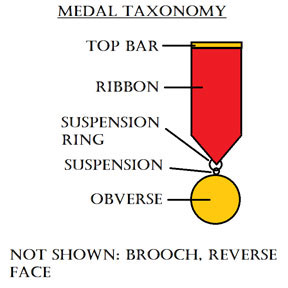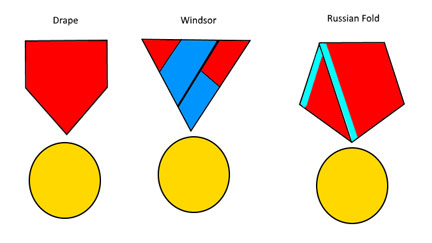Terminology

Medals can vary widely in appearance, in terms of the ribbons and metals used in their construction, but the overall design is very similar among medals from different nations. A common taxonomy for medals will help in describing them. The following taxonomy has been derived from that used by the Orders and Medals Society of America
The common parts of a medal are:
- 1. Top Bar – Not always present, but when it's there the function is to secure the ribbon to the brooch. If present, it may be inscribed with names or places.
- 2. Ribbon – the part of the medal that connects the medal proper to the brooch. Originally silk, these are now usually made of synthetic materials, and are commonly grosgrain or satin.
- 3. The medal itself has two sides or faces:
1. The obverse face is the side which a casual observer can see when the medal is being worn.
2. The reverse face is that side worn closest to the wearer's chest.
- 4. The brooch is the pin used to attach the medal to the uniform.
- 5. The suspension ring is the contact point between the medal and the ribbon. On some medals, the ribbon is folded through the suspension ring during mounting.
- 6. The suspension is a loop or attachment point affixed to the top of the medal, where it connects to the suspension ring.
Ribbons can be folded in different ways. Three of the most common are:
- 1. The drape, where the sides of the medal come down in parallel;
- 2. The Windsor, which is more triangular and looks like a folded flag; and
- 3. The Russian Fold, which forms a pentagon.
